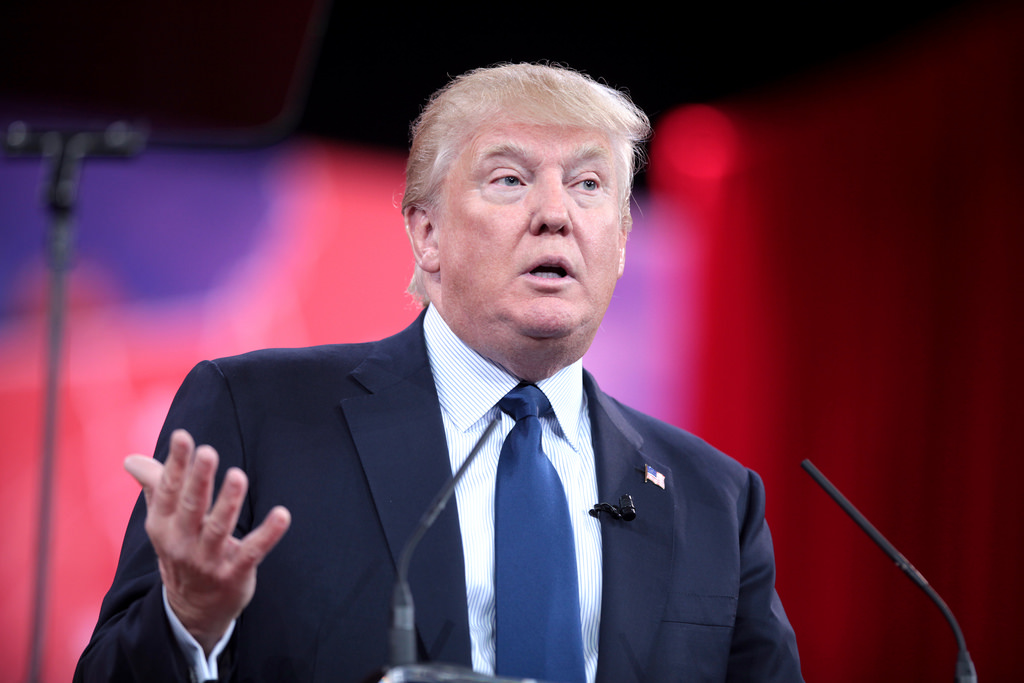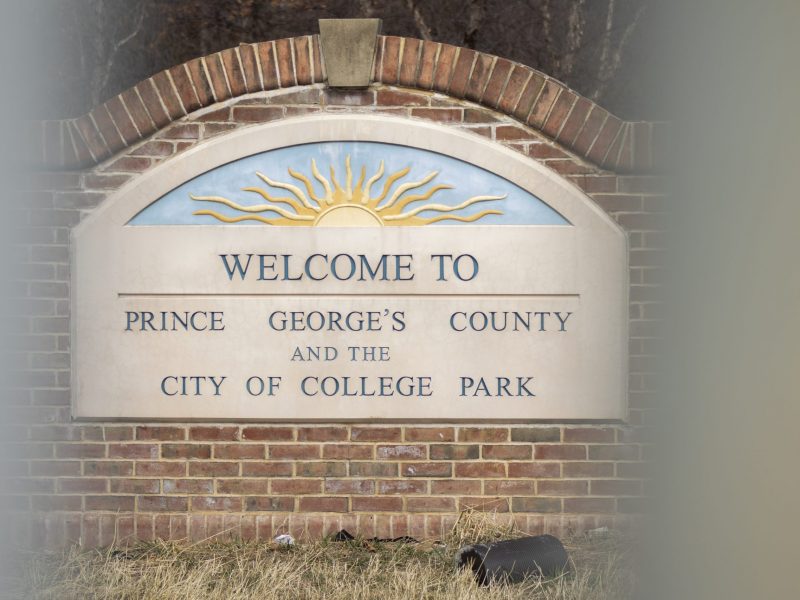Monday marks one month since President Trump took office on Inauguration Day. Here’s a look at what has happened since:
Jan. 20: Donald Trump took office and gave an inaugural address that pledged to put “America first.” In his address, Trump said that American citizens are “now joined in a great national effort to rebuild our country and restore its promise for all of our people.” He also said his inauguration was not just the transfer of power from one administration to another, but the transfer of power from Washington back to the American people. Trump’s inauguration sparked protests in Washington and across the country. While the majority of protests were peaceful, in Washington six police officers were injured and more than 200 people were arrested after they caused damage downtown, throwing rocks and bottles and starting trash fires.
[Read more: UMD Trump supporters say they feel voiceless on a liberal campus]
Jan. 21: Hundreds of thousands of people gathered in Washington, D.C., and in cities across the country to show their support for civil rights following Trump’s election. The day saw more than one million Metro rides, making the Women’s March On Washington the second-most traveled day in Metro history after Obama’s 2009 inauguration.
Metrorail ridership for Sat, Jan 21 = 1,001,616 #wmata
— Metro (@wmata) January 22, 2017
At a press conference that afternoon, White House press secretary Sean Spicer accused the media of reporting Trump’s inauguration crowd dishonestly, claiming the crowd was much larger than published photos depicted. Spicer alleged Trump’s crowd was the largest audience to witness an inauguration “period,” both in person and through broadcasts. Fact checkers deemed his statements false shortly thereafter. The following day, counselor to the president Kellyanne Conway defended Spicer in an interview with NBC’s Meet the Press, telling Chuck Todd that he merely provided “alternative facts.”
Jan. 24-25: Following through with his promise to crack down on illegal immigration, Trump signed executive orders in support of building a Mexico-U.S. border and incentivizing cities to report undocumented immigrants to the federal government. Throughout his campaign Trump called for the country to “build a wall” to prevent illegal immigration from Mexico. In June 2015 he said Mexican immigrants were “bringing drugs. They’re bringing crime. They’re rapists. And some, I assume, are good people.”
Mexico has taken advantage of the U.S. for long enough. Massive trade deficits & little help on the very weak border must change, NOW! — Donald J. Trump (@realDonaldTrump) January 27, 2017
He also issued memos to move forward with construction of the Dakota Access and Keystone XL oil pipelines. Barack Obama had rejected plans for the Keystone pipeline amid concerns that the project’s petroleum extraction would contribute to climate change. The U.S. Army Department halted construction of the Dakota Access Pipeline — which would cross through indigenous land — after months of protests from Native American and environmental activists.
Jan. 27: Trump signed an order that bans U.S. entry to citizens from seven predominantly Muslim countries — Iraq, Iran, Libya, Somalia, Sudan. Syria and Yemen — for 90 days. The order also suspended the entry of all refugees for 120 days, and Syrian refugees indefinitely. The order affected about 350 members of the University of Maryland community, most of whom are post-doctoral researchers, visiting scholars and graduating students, university President Wallace Loh wrote in a statement on Jan. 31.
[Read more: University of Maryland President Wallace Loh spoke out against Donald Trump’s rhetoric]
Jan. 28: The president placed a lifetime ban on former executive appointees lobbying for foreign governments, and a five-year ban for all other lobbying, furthering his efforts to “drain the swamp.” He also gave the U.S. military 30 days to develop a way to defeat ISIS.
Jan. 30: Trump imposed a new rule that will cut two government regulations for each new regulation created.
When will the Democrats give us our Attorney General and rest of Cabinet! They should be ashamed of themselves! No wonder D.C. doesn’t work! — Donald J. Trump (@realDonaldTrump) January 31, 2017
Jan. 31: The president nominated Neil Gorsuch, a conservative federal appellate judge from Colorado, to replace the late Antonin Scalia on the Supreme Court. Obama had nominated Merrick Garland, chief judge of the Circuit Court of the District of Columbia, after Scalia’s death, but Senate Republicans did not hold confirmation hearings on the nomination.
Feb. 3-4: A federal judge in Washington state placed a temporary block on Trump’s travel ban order. Trump expressed opposition over Twitter in response.
Feb. 7: Vice President Pence broke a 50/50 tie in the U.S. Senate to confirm Betsy DeVos as Education Secretary. DeVos, who has no prior experience in public education, came under fire from Democrats and education activists after struggling with policy questions during her Senate confirmation hearing.
Feb. 8: The Senate confirmed Jeff Sessions, a conservative who previously served as U.S. attorney for the Southern District of Alabama, as the next attorney general for the United States. Sessions was the first sitting senator to endorse Trump in early 2016.
Feb. 9: The U.S. 9th Circuit Court of Appeals refused to reinstate Trump’s executive order restricting travel into the United States. A circuit court panel voted 3-0 to reject the administration’s argument that courts did not have the authority to review presidential actions on national security.
SEE YOU IN COURT, THE SECURITY OF OUR NATION IS AT STAKE! — Donald J. Trump (@realDonaldTrump) February 9, 2017
Feb. 13: National Security adviser Michael Flynn resigned shortly after reports revealed he misled Pence regarding his communication with Russia. “I inadvertently briefed the Vice President-elect and others with incomplete information regarding my phone calls with the Russian ambassador,” he wrote in his farewell letter. “I am tendering my resignation, honored to have served our nation and the American people in such a distinguished way.”
Feb. 14: Trump repealed Obama-issued legislation that required U.S. oil and natural gas companies to disclose their payments to foreign governments.
Feb. 15: Trump and Israeli Prime Minister Benjamin Netanyahu met at the White House. Trump told Netanyahu he’d like to see him “hold back on settlements for a little bit,” and that his stance on Israel and Palestine as a two-state or one-state solution depends on the agreement they reach with each other.
Feb. 16: Trump led a 75-minute press conference, where he claimed he “inherited a mess,” but said “this administration is running like a fine-tuned machine.” He also criticized the “fake news” media for being dishonest:
The FAKE NEWS media (failing @nytimes, @NBCNews, @ABC, @CBS, @CNN) is not my enemy, it is the enemy of the American People! — Donald J. Trump (@realDonaldTrump) February 17, 2017
Don’t believe the main stream (fake news) media.The White House is running VERY WELL. I inherited a MESS and am in the process of fixing it.
— Donald J. Trump (@realDonaldTrump) February 18, 2017
Feb. 19: Confusion followed Trump’s suggestion at a Feb. 18 rally in Florida that something terrible had happened the previous night in Sweden. The next day, the president responded over Twitter:
My statement as to what’s happening in Sweden was in reference to a story that was broadcast on @FoxNews concerning immigrants & Sweden.
— Donald J. Trump (@realDonaldTrump) February 19, 2017



